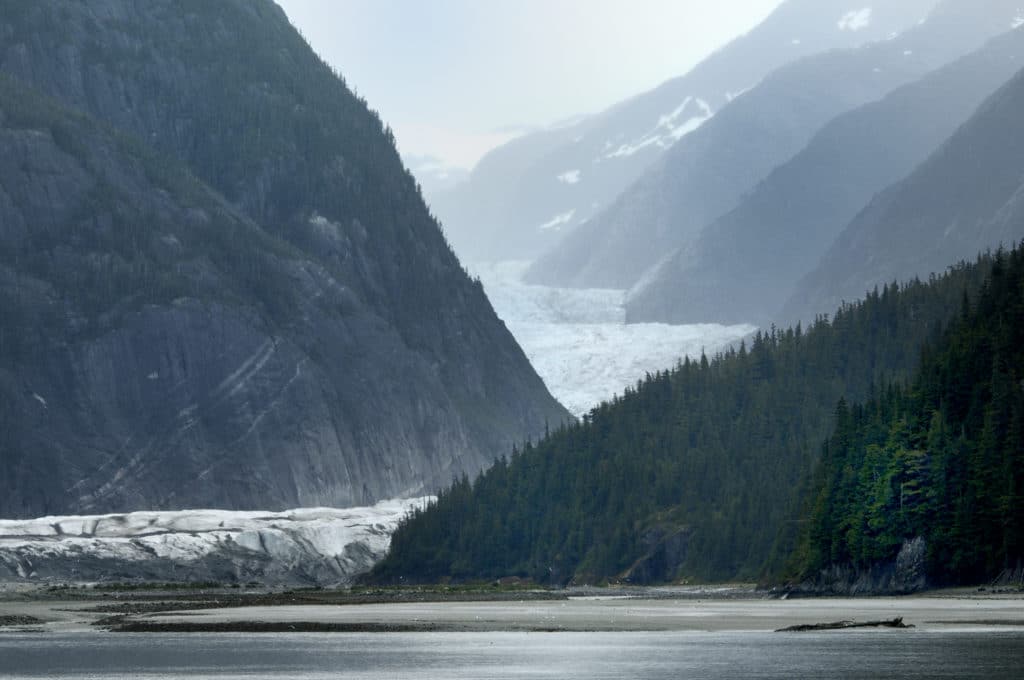
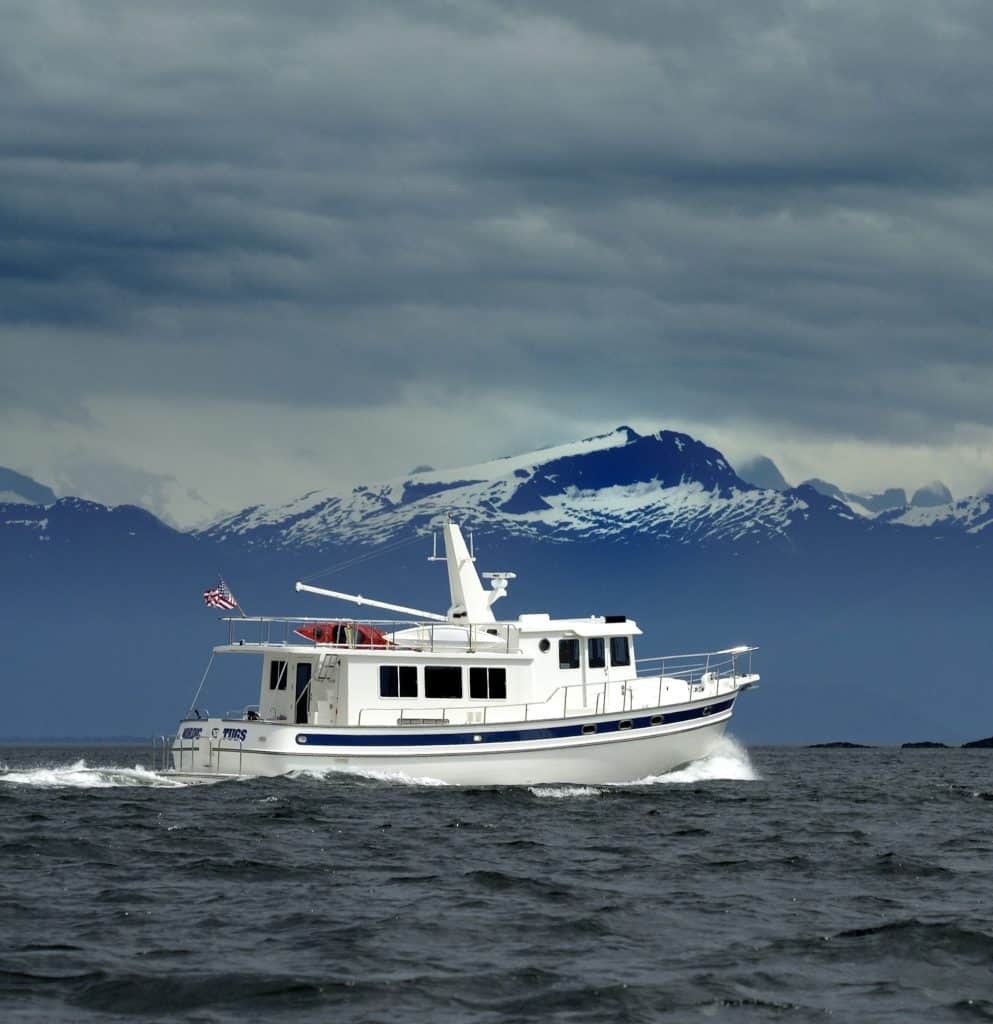
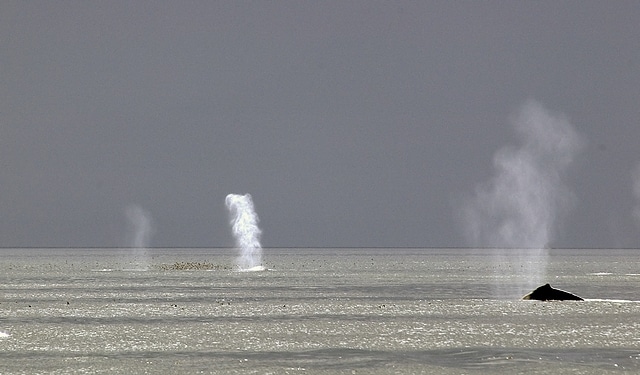
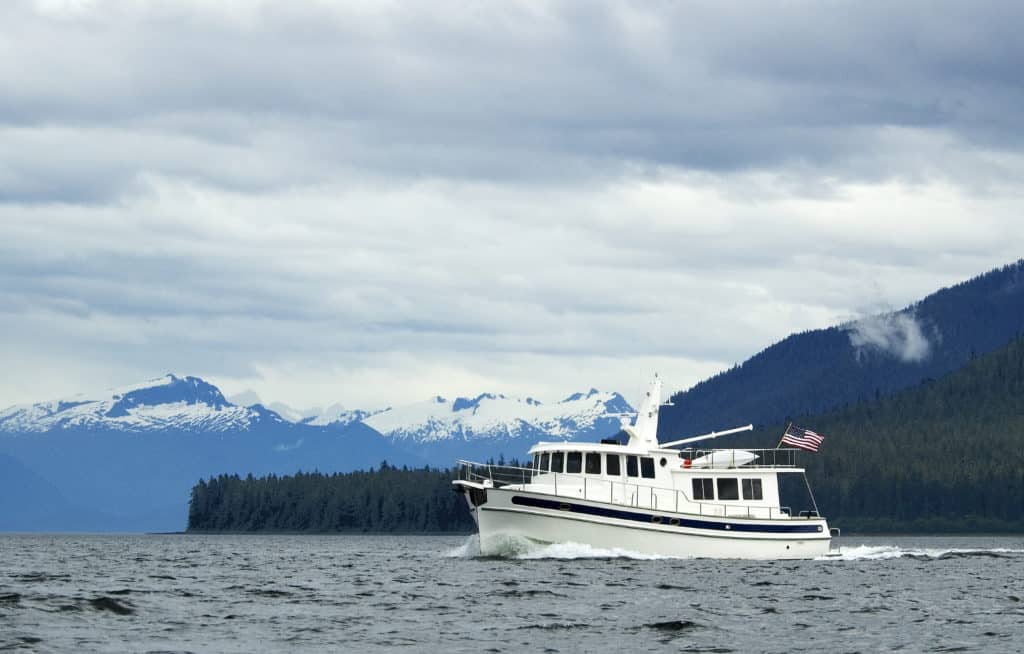
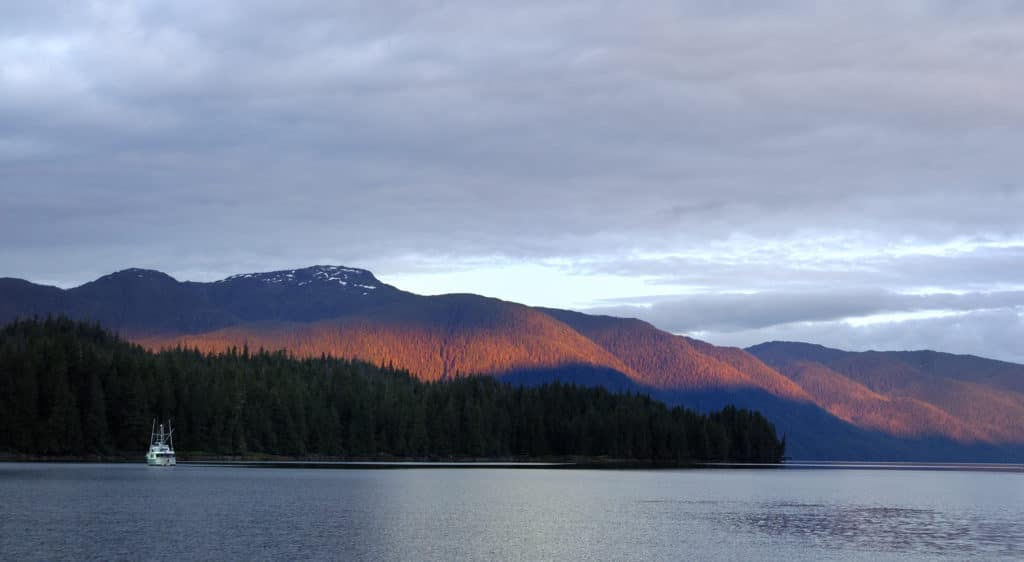
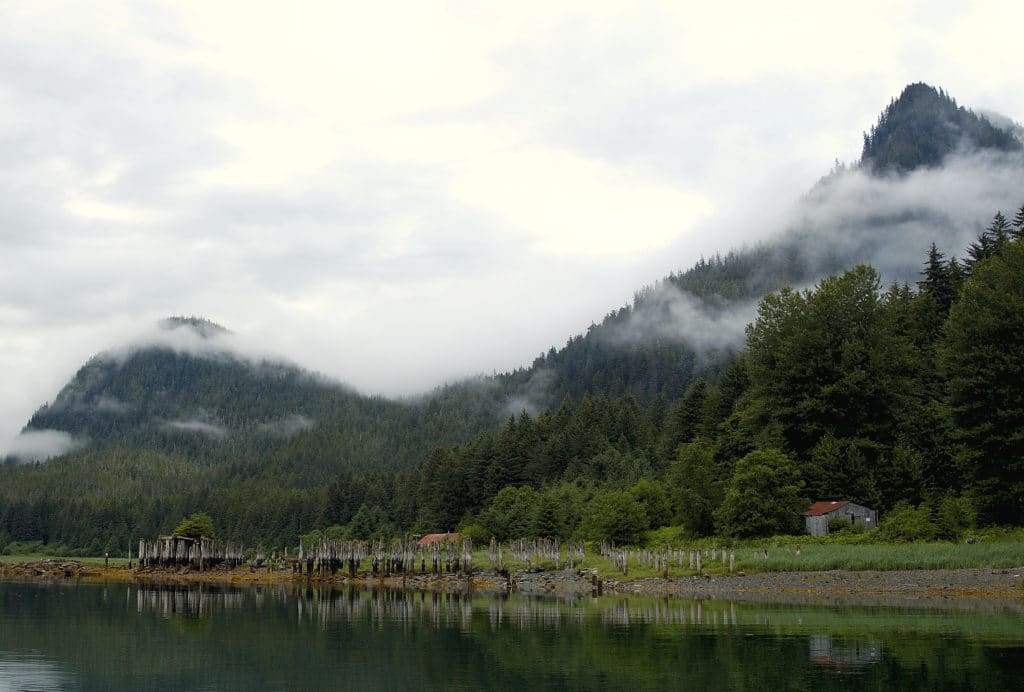
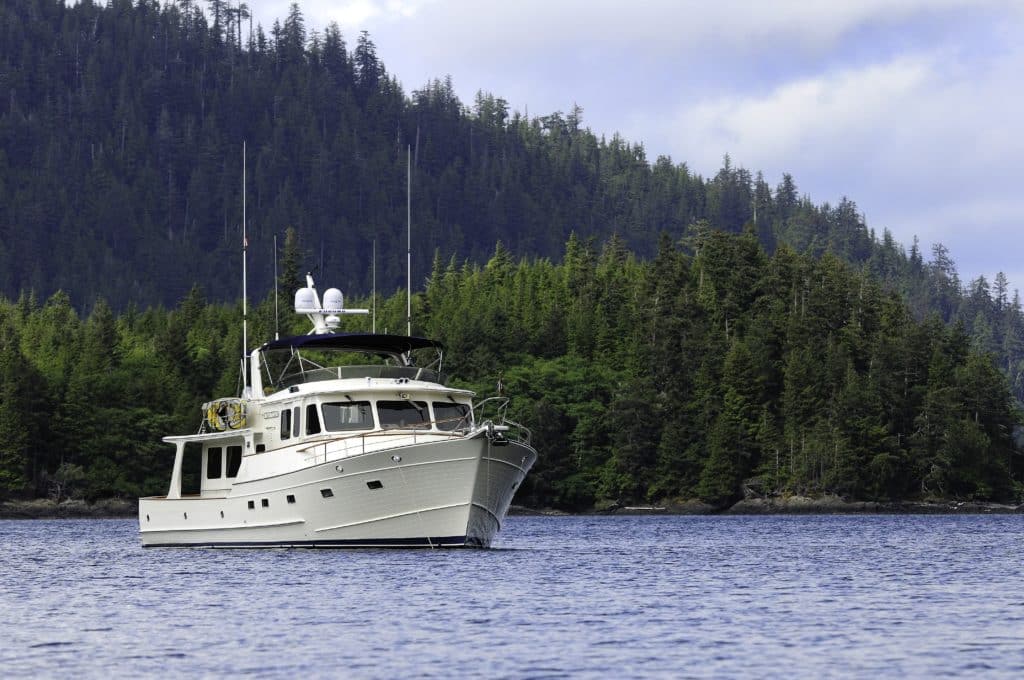
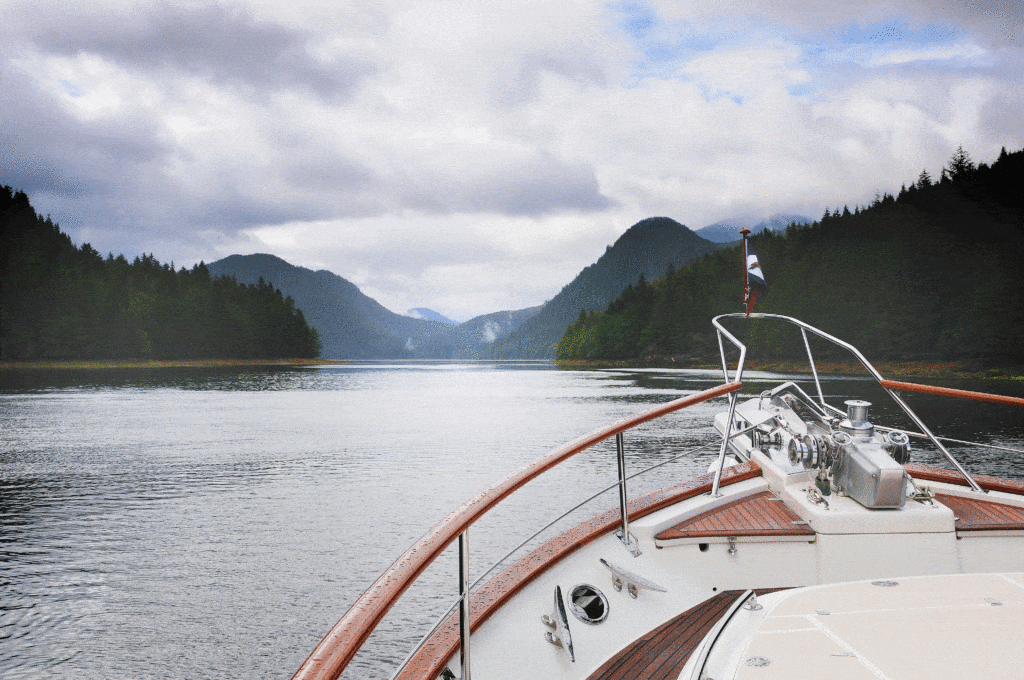
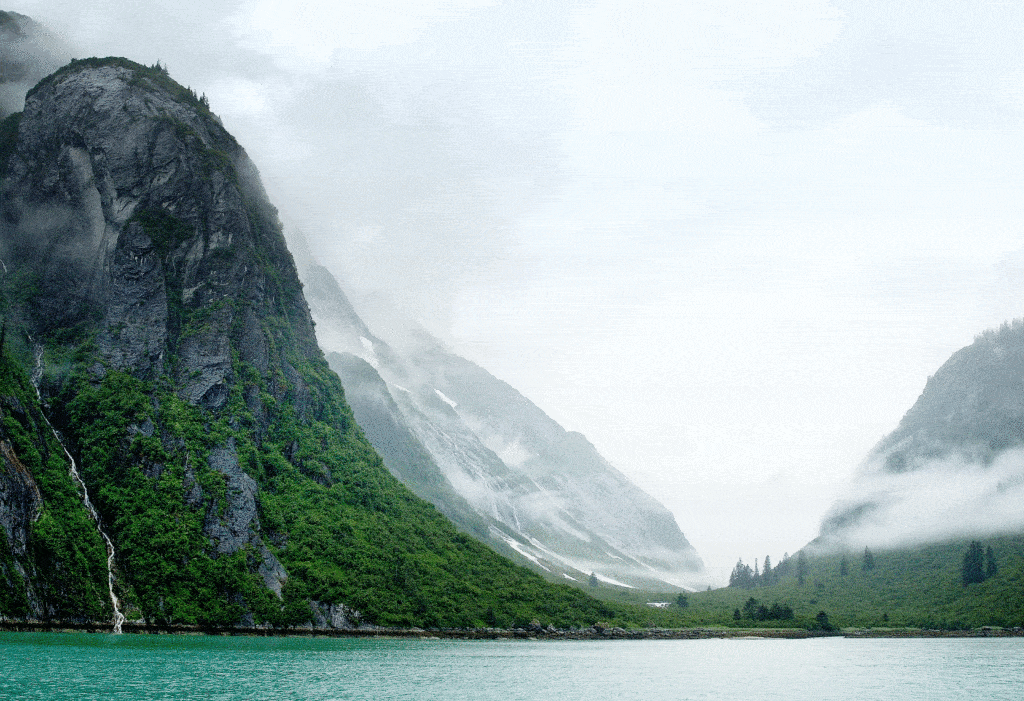
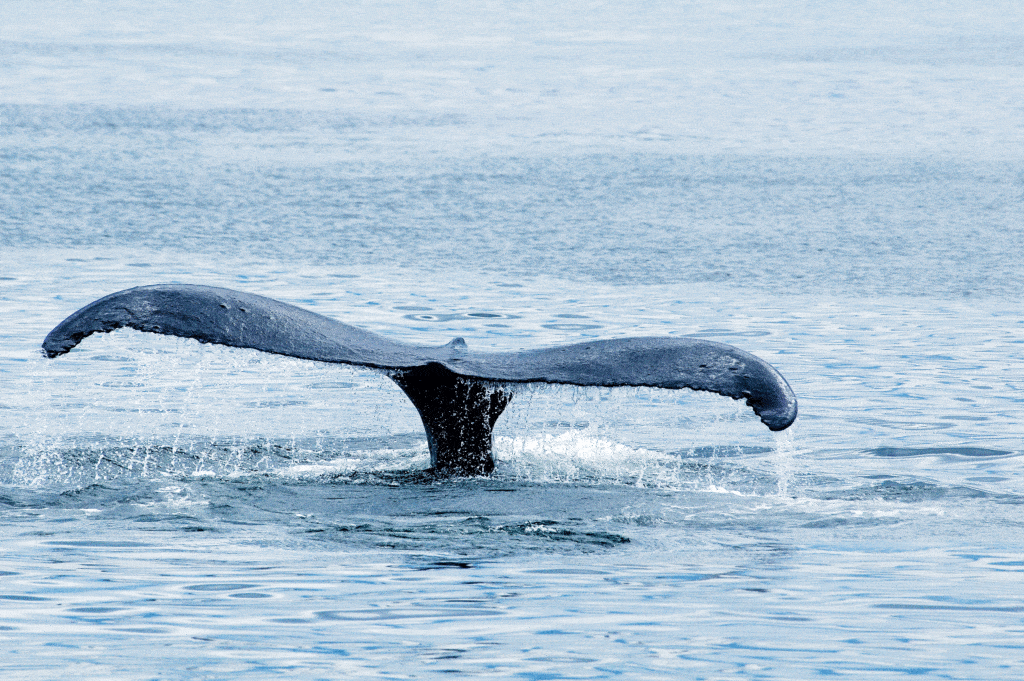
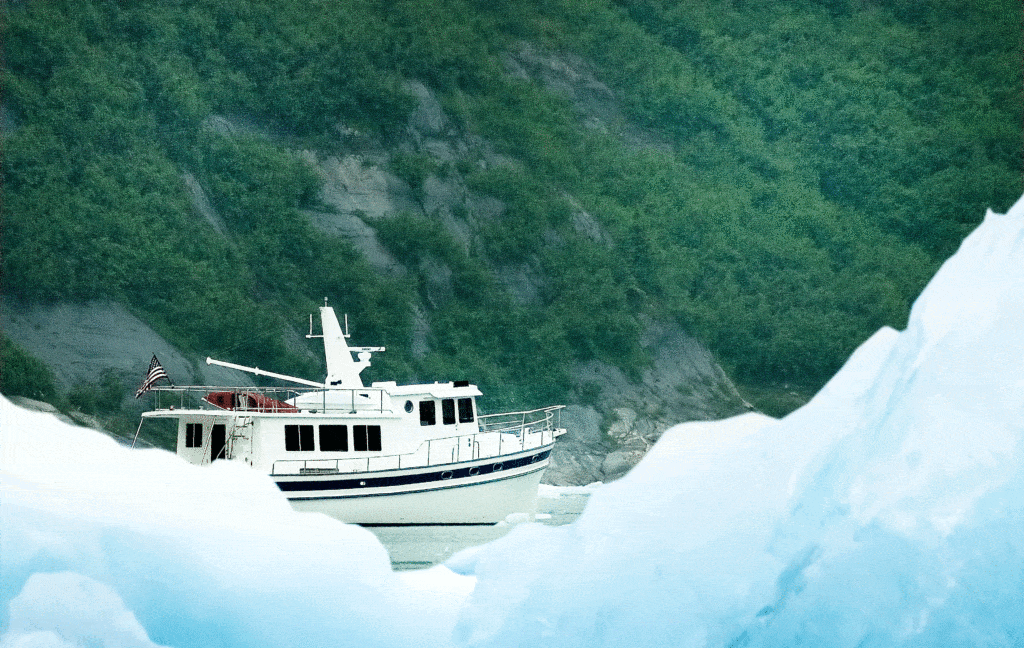
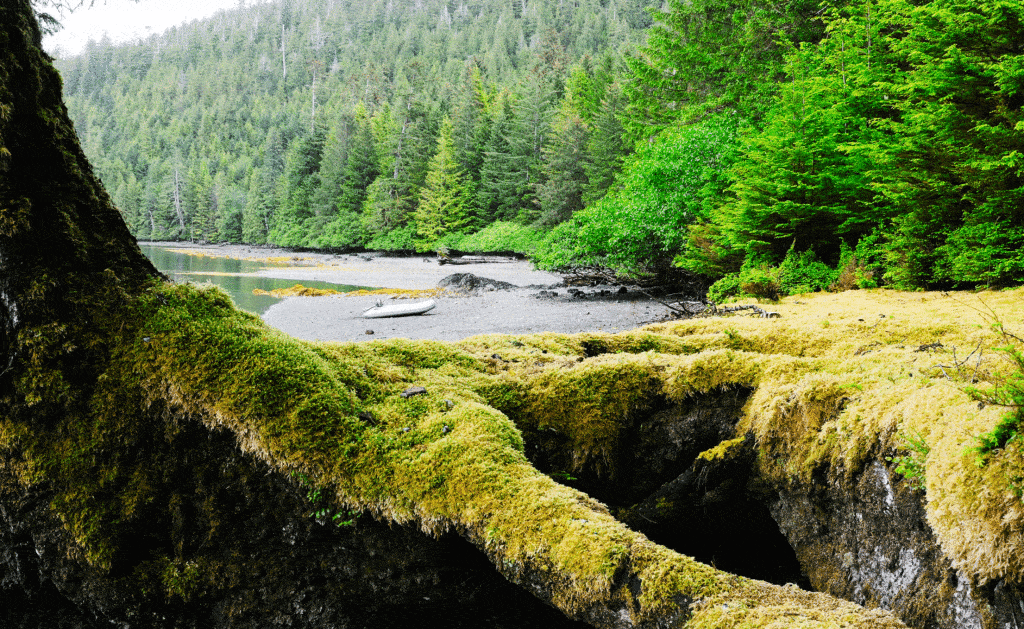
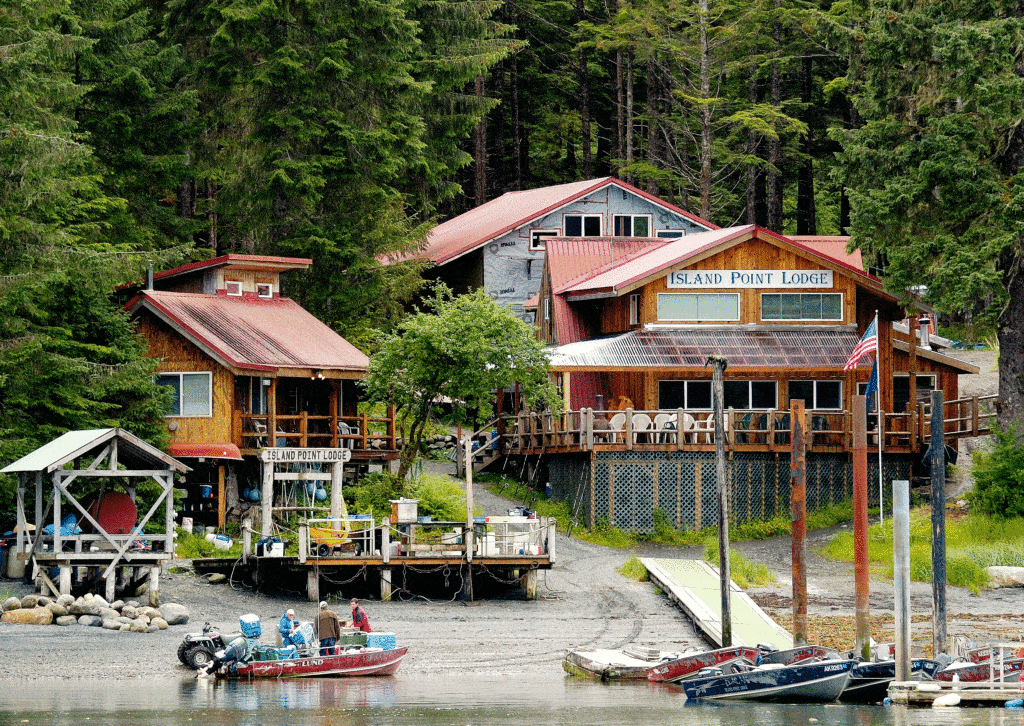
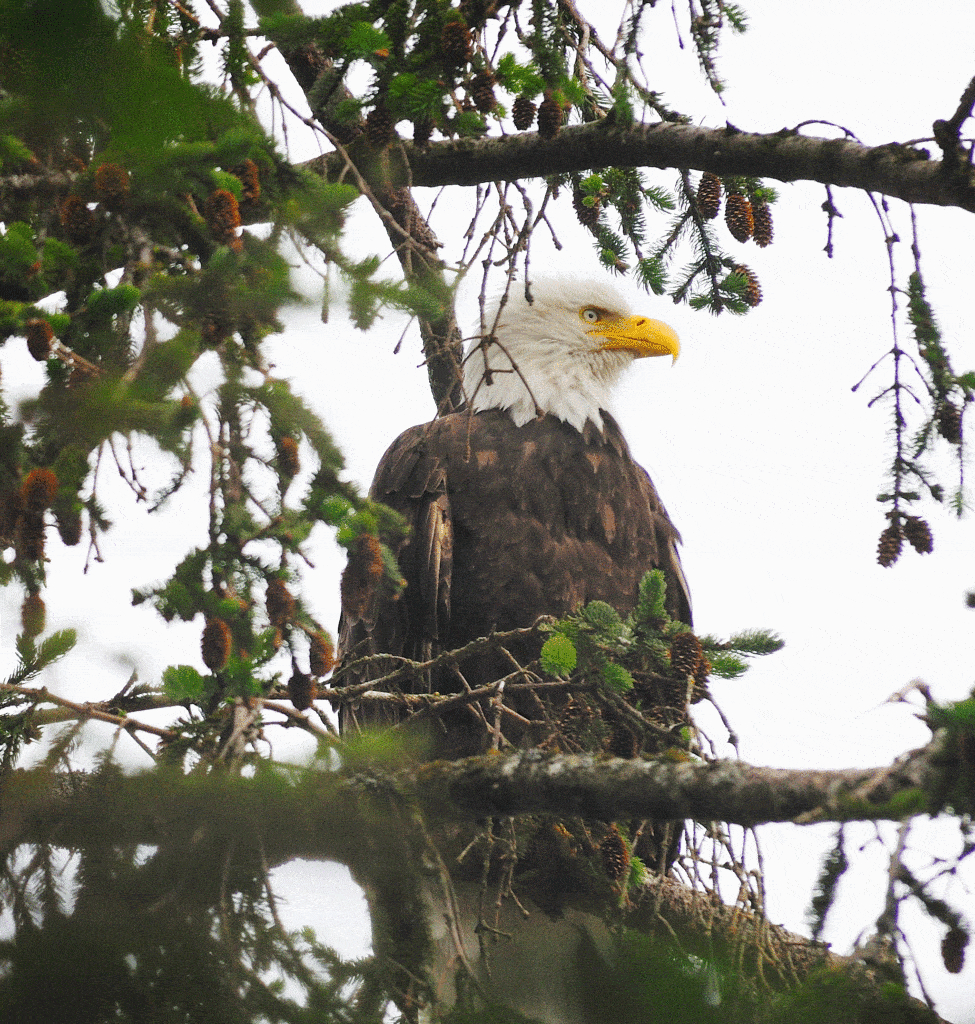
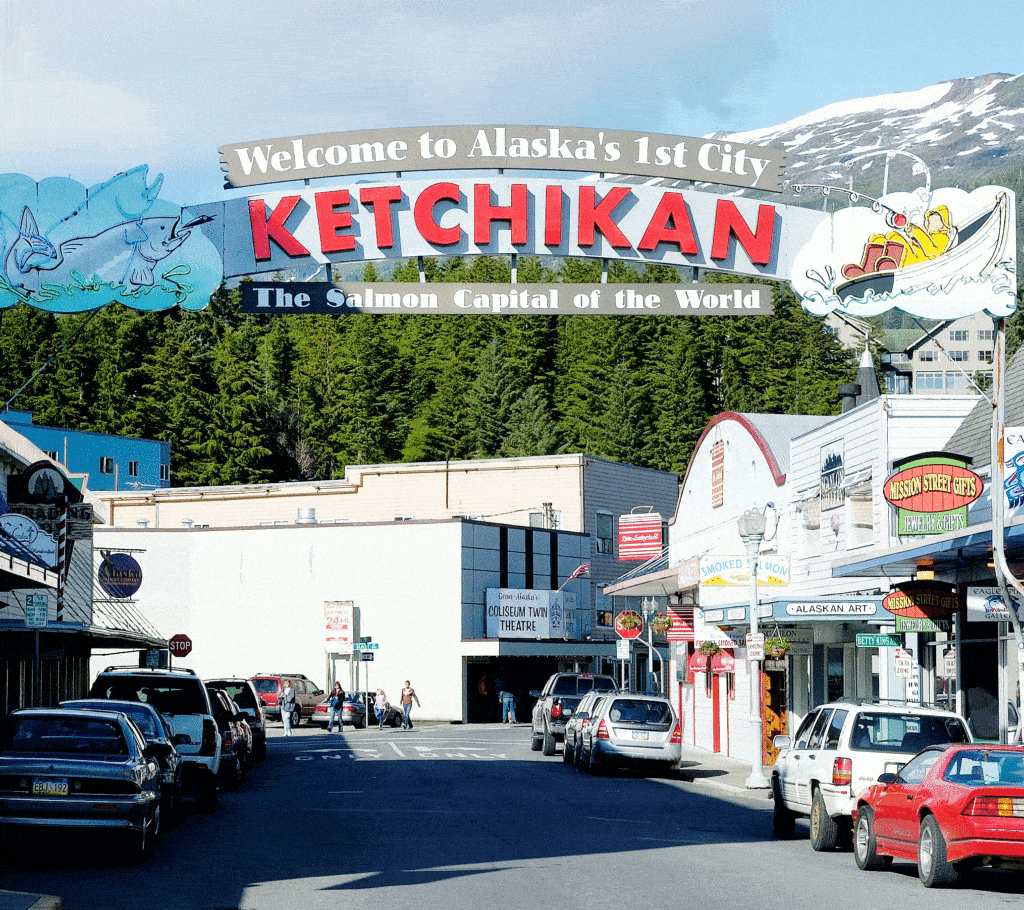
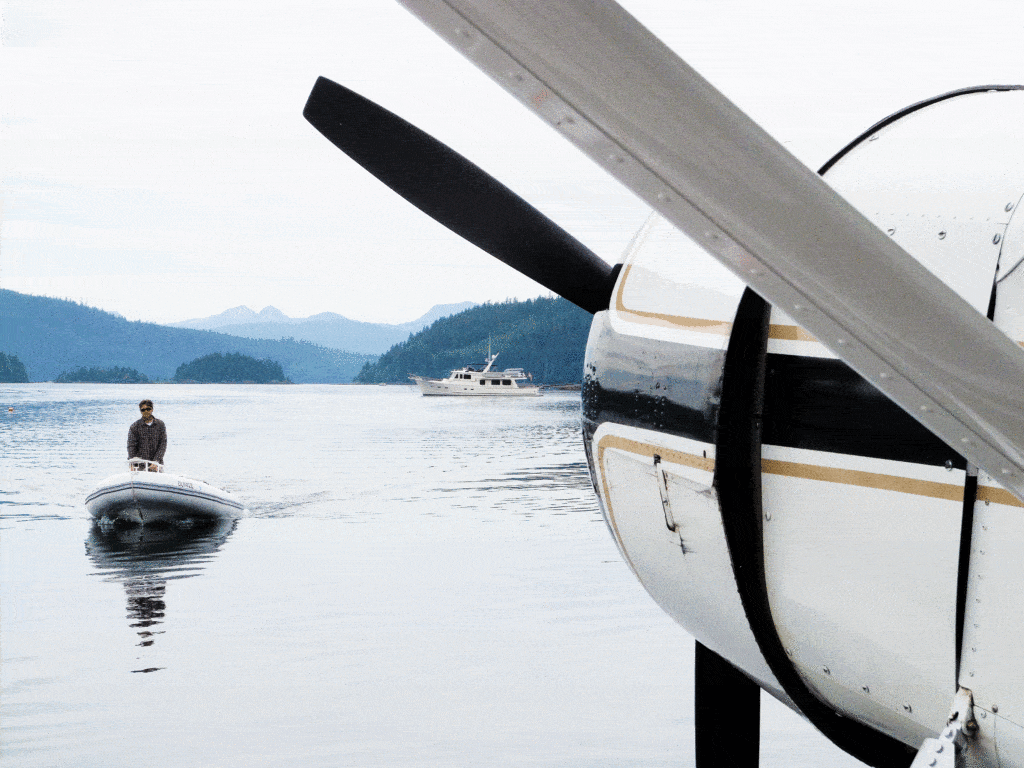
Welcome to Gagsville,” jokes a fisherman repairing his nets as we tie up our Nordic Tugs 52 between two gill-netters along the docks of Fairview Harbour in Prince Rupert, British Columbia.
The gagging smell of the fish-packing plant 50 yards away is overpowering, but with gale force winds and 15-foot seas forecast for the Dixon Entrance over the next several days, we’ll get used to smelling like packed herring.
My crew now consists of two boating buddies with thousands of miles of offshore sailing experience, and the three of us are eager to begin our passage to Juneau, Alaska. The weather finally clears and we experience unusually flat seas and calm winds on our 90-mile run to Ketchikan, Alaska. Checking in with U.S. Customs is easy, as the officer comes to our slip at Bar Harbor marina within an hour of our arrival.
Ketchikan, a gateway to the Inside Passage, is a colorful, energetic town. Cruise ships dock and thousands of tourists roam the streets eager to spend their dollars in local shops and restaurants. Floatplanes ferry adventurous anglers to outlying fishing lodges. Commercial fishing boats arrive after weeks at sea. Tour boats are filled to capacity with shutterbugs and wildlife lovers.
Our cruising guide recommends stopping in Anan Bay, 75 miles north, to visit the Anan Wildlife Observatory operated by the U.S. Department of Agriculture Forest Service. With its large run of pink salmon, Anan Creek attracts a steady population of black and brown bears, and the observatory provides a viewing shelter and photo blind. Loaded with camera gear, we land our dinghy and start up the well-marked trail, our eyes watching for any movement in the trees. But before we hike 100 yards, a forest ranger appears asking us for our permit. Unbeknownst to us, a pass is required from July 5 through August 25, and it can be purchased for $10 online. We are also informed that, because of the heavy cruise-ship traffic and the need to limit the number of daily visitors to 60, there is at least a two-week waiting list. Disappointed, we return to our mothership, mumbling and grumbling about the tourism industry.
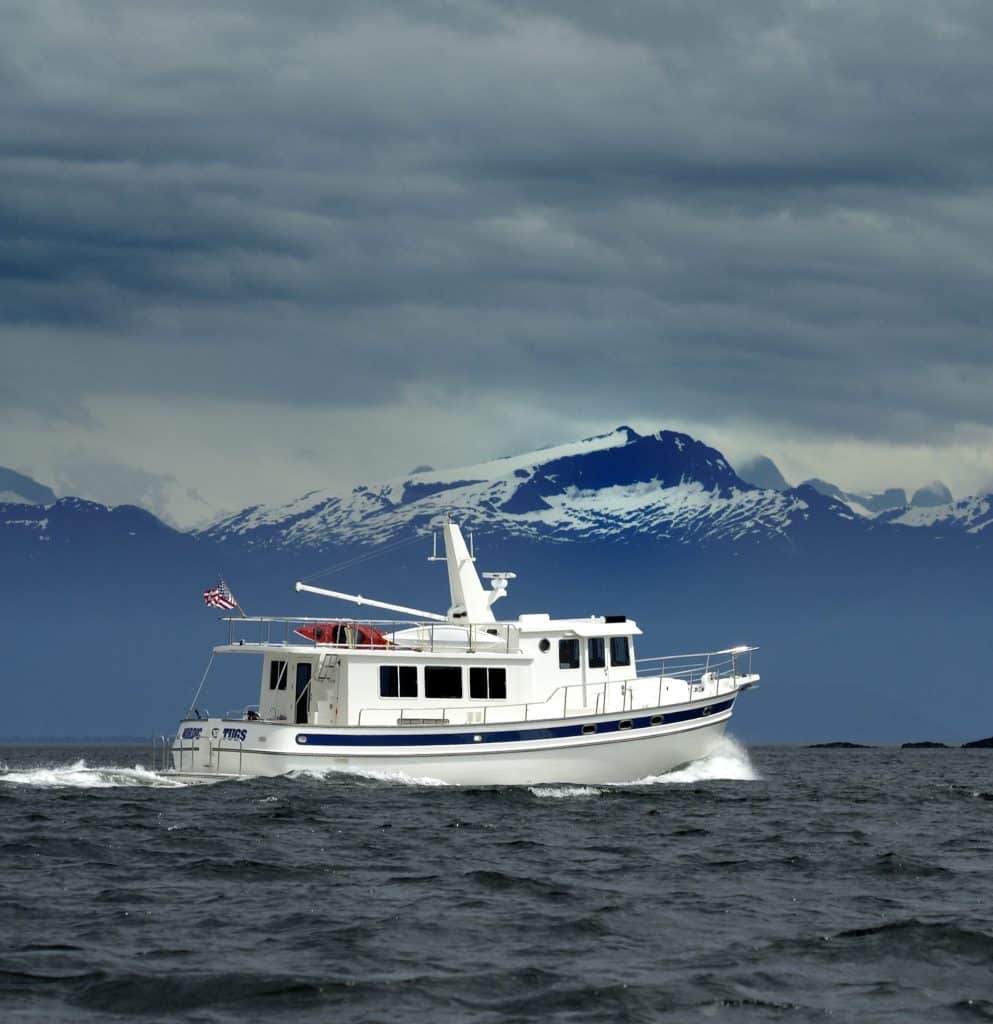
We are happy to discover, however, that our next stop, Wrangell, is an authentic Alaskan city not yet transformed by visiting cruise ships. A visit to Chief Shakes Tribal House illustrates the importance of carved totem poles to the Tlingit people, who have lived in the surrounding Tongass National Forest for thousands of years. After surviving three gold rushes, Wrangell today attracts fishermen, outdoorsmen and artists to its unspoiled island community.
Leaving the city, we head up Wrangell Narrows, a 20-mile stretch brimming with ship traffic. Ferries, commercial fishing boats, tugs, cargo barges, small fishing boats and cruisers like us are everywhere in the relatively narrow channel. Buoys marking dangerous ledges and submerged rocks are being driven sideways, indicating the strong current. Exiting the north end, we pass Petersburg (the winning port in the reader-voted YACHTING’s 50 Best Towns 2013 competition), a town that has retained its Norwegian heritage and continues to be an active fishing center.
As we enter Frederick Sound and see the peak of Devil’s Thumb sticking out of the cloud cover, there’s a sense that we are entering a different, less forgiving world. The water takes on a milky appearance from the glacial silt, and we begin to see icebergs that have come from glaciers not far away. After spending the night tucked into Thomas Bay behind Ruth Island — a popular anchorage where we drop our vessel’s hook in 50 feet of water — we explore the steep walls of Scenery Cove and get a close look at Baird Glacier, which has been receding rapidly during the past two decades. Our crew feels isolated from civilization and thankful we have such a sturdy, dependable boat under our command.
Keen to try the fishing tips given to us by a fellow cruiser in Prince Rupert, we pause off Kupreanof Island near Portage Bay to drop a crab trap rigged with bloody fish heads. Jigging our lures over the trap, we soon land two large halibut, which will provide us with a fabulous meal that evening.
After icing down our catch, we proceed north, and on approach to Cape Fanshaw where Frederick Sound meets Stephens Passage, several waterspouts appear off our bow. Suddenly, we find ourselves surrounded by at least 20 humpback whales that seem interested in entertaining us as they swim and breach, their odoriferous spouts hinting at what they’ve eaten for lunch.
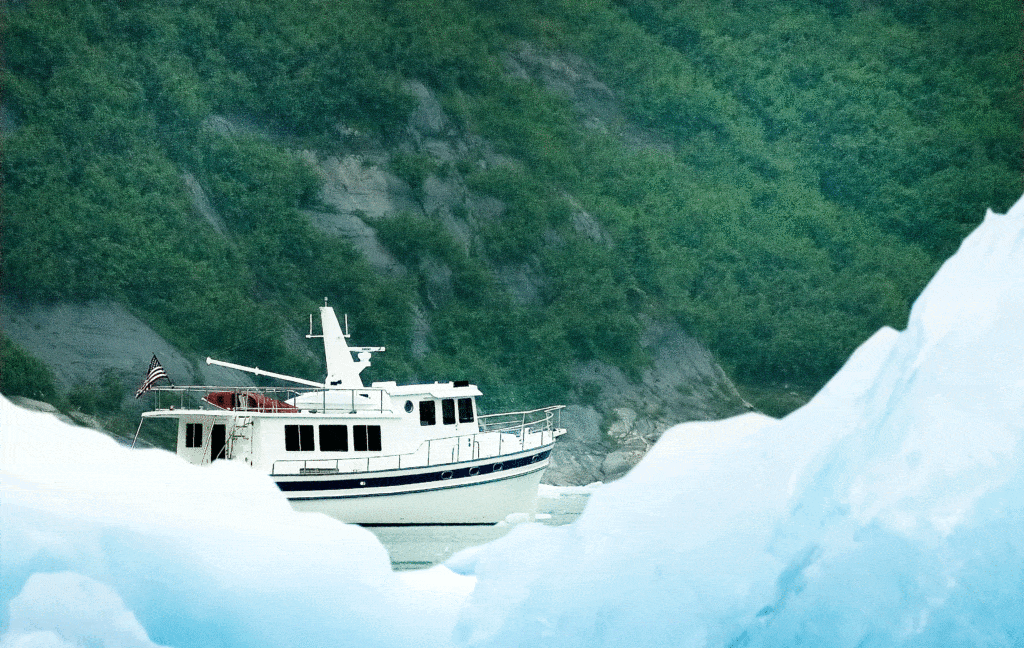
The Alaskan weather and our surroundings help set the mood of isolation. We haven’t seen the sun since leaving Ketchikan; only an occasional cruising boat passes by, and with our engine off while anchored there is deafening silence. Low clouds color everything with gray tones, and we remember hearing the term “clousy weather” from fishermen we’ve met along the way. It’s more than just misty. It’s wet and cold. It’s Alaska.
At the mouth of Holkham Bay where the towering fjords Tracy Arm and Endicott Arm meet, we slow the Nordic Tugs to idle speed to figure out how to get around the huge iceberg floating between the entrance markers. Remembering that icebergs show only about 20 percent of their bulk above water, we approach carefully as we make our way to Tracy Arm Cove, a protected anchorage where we will spend the night. This large cove is a holding area for adventurous cruisers coming and going from the two main attractions: the heads of Tracy Arm and Ford’s Terror.
The next morning we explore Tracy Arm, working our way up the winding fjord with its vertical walls of granite, milky waters and thick ice floe. Slowly, we maneuver the boat around chunks of ice, marveling at the dramatic “lost world” scenery all around us. A mile before we reach the head of the arm, the ice becomes too thick to continue without risking damage to our vessel’s hull or running gear, so two of us launch the inflatable while one of us stands by on the Nordic Tugs. We work our way through the ice toward the glacier, but soon we’re cold and wet, even with good foul-weather gear. While we are finally able to see Sawyer Glacier, we lose sight of our mothership behind all the constantly moving ice.
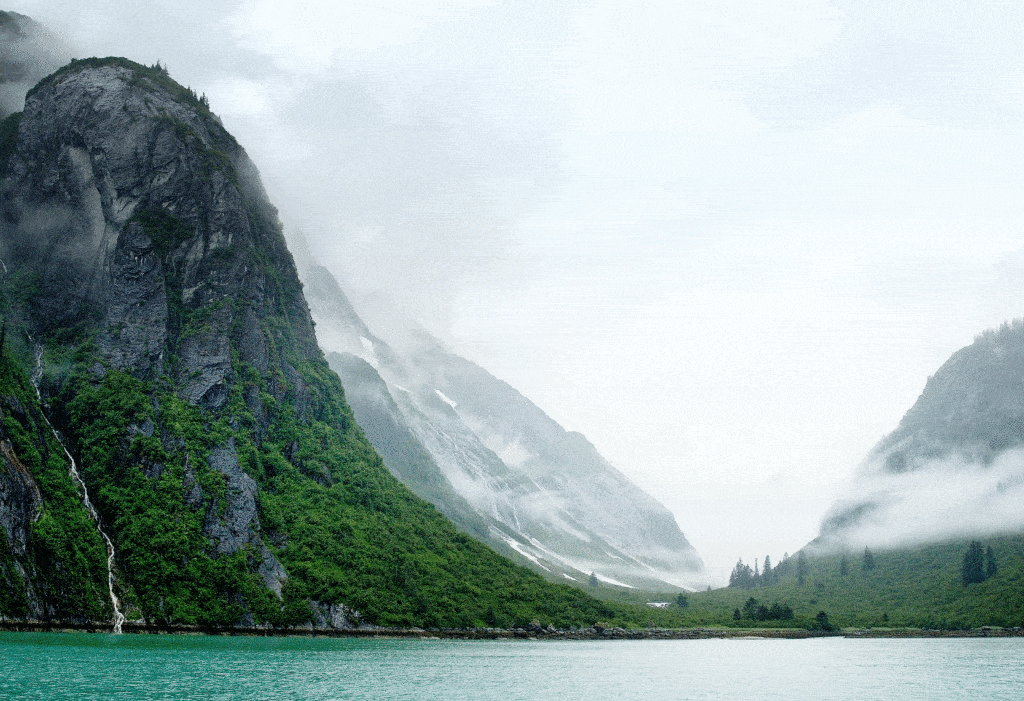
It is time to make our escape through the ice, find our boat and get warm. As we are exiting Tracy Arm, we stay to the starboard side of the channel to make room for a moving target on our radar. A huge cruise ship appears out of the mist on its way to the glacier. We realize that what is “big ice” for us is probably no big deal for these multistory monsters.
A sense of melancholy comes over us knowing our adventure is almost over. Instead of heading straight to Juneau, we stop in Taku Harbor, 20 miles south of the city. The harbor once was the site of a Hudson Bay trading post and later a commercial cannery, but now only ruins of the old buildings and pier remain. These are signs of the changing times, as Alaskans try to adapt to a struggling fisheries industry while tourism continues to grow. Gift shops and mini malls are slowly replacing rowdy saloons and fish-packing houses. Enjoying a dinner of steak and freshly caught Alaskan king crab, we toast our rugged Nordic Tugs that has proved herself an able and comfortable passagemaker. We also toast the late Morten Lund, author of Inside Passage to Alaska, the book that started our dream.
Juneau greets us with more “clousy” weather, and we tie up amid the fishing fleet at Aurora Harbor docks, one of three marina facilities operated by the city. Tidal ranges here are 25 feet or more, so walking up the ramp from our floating dock to street level takes some energy and sure footing. While most residents and visitors are clad in foul-weather gear, the town has a cheery, bustling feeling to it, and we’re glad to be part of civilization once again. We’ve traveled just over 1,000 miles since leaving Anacortes, Washington, and we prepare the Nordic Tugs for her return trip, after which she will be turned over to her new owner.
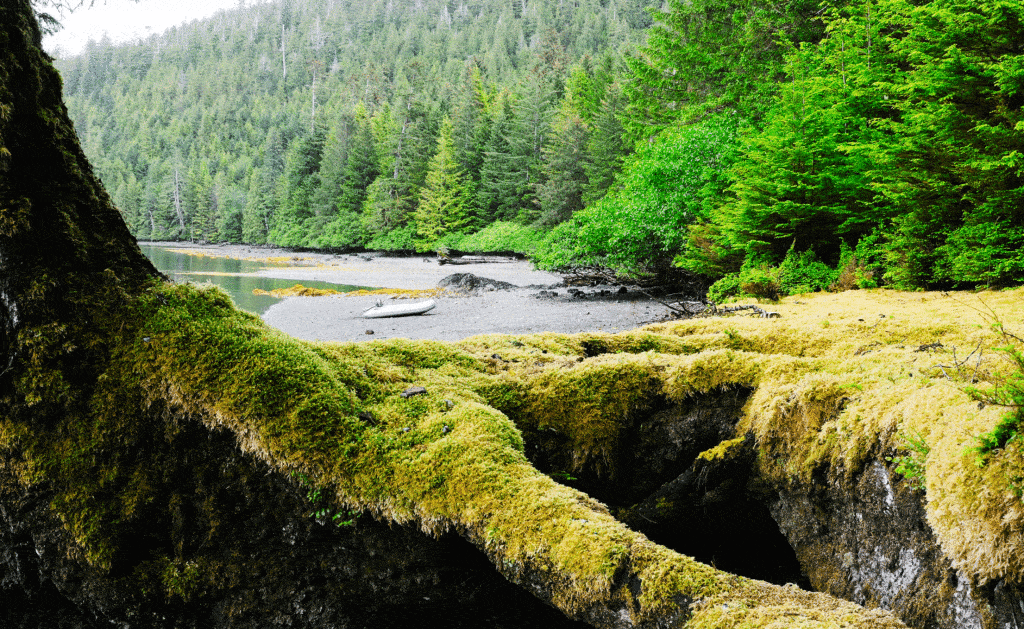
A Side Trip to the Queen Charlotte Islands
After completing the Inside Passage to Alaska, I jumped at boatbuilder Tony Fleming’s invitation to join him aboard Venture, his personal Fleming 65, for an exploration of the Queen Charlotte Islands. Located 50 miles off the coast of British Columbia, the islands are known locally as Haida Gwaii, home to the Haida people who have lived here for more than 10,000 years.
I caught up with Venture after a 15-hour trip by air, bus, ferry and taxi from the East Coast, finally reaching Queen Charlotte Village on Graham Island. With a population of less than 1,000, it is the largest town in the chain of over 400 islands that stretch north and south for 190 miles. Aside from nearby Moresby Island, none of the other islands have paved roads. The 5,000 people of this island chain make their living by logging, fishing or tourism.
The Canadian Park Service is committed to preserving the southernmost 200 islands known as Gwaii Haanas, a remote national park reserve and heritage site. The number of visitors per day on each island is limited, and our crew was required to attend a one-hour briefing on safety issues and the fragile ecosystem. Navigation is straightforward, as depths are typically 100 feet or more and the need for channel markers and navigation aids is minimal. Because of frequent rain and fog, radar is a must. Traveling at night is not advised, but the high latitude provides light until 10 p.m. during the summer.
Our exploration of the park began at Skedans Bay, one of six Haida Gwaii “Watchmen Village” sites. As instructed, we called on the VHF for permission to land. A friendly guide walked us past the ruins of longhouses, carved mortuaries and memorial totem poles. These are proud people dedicated to keeping their heritage alive. At the ancient village of Tanu and later at Windy Bay, Watchmen took us for hikes through the moss-covered woods, where sightings of bald eagles and deer were common among the thousand-year-old trees.
For five days we worked our way south in chilling rain and stiff winds, eventually arriving at Hotspring Island, popular for its small hot springs deep in the forest. There is no cellphone coverage throughout the park and, because of the poor weather, there was concern whether the floatplane I chartered would be arriving. But suddenly we heard the de Havilland Beaver just before it fell out of the low cloud cover and landed 200 yards from Venture. Gale force winds were forecast, and Fleming and his crew prepared for an overnight crossing to the mainland, safely returning to Sidney on Vancouver Island. We all felt lucky to have explored these remote islands and learned more about the ancient Haida civilization.









